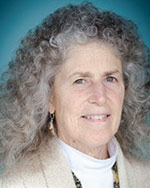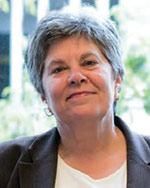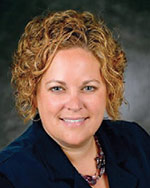Preparing nurse practitioners for rural practice
 Louise Kaplan, PhD, ARNP, FNP-BC, AANP, FAAN  Susan M. Skillman, MS  Jana Zwilling, APRN, FNP-C |
Educating more nurse practitioners (NPs) for rural practice is essential to address provider shortages in America’s small towns – but little is known about the aspects of clinical training that best prepare and encourage NPs to choose and succeed in a rural setting.
To bridge that gap, the Collaborative for Rural Primary care Research, Education, and Practice (Rural PREP) is studying rural-oriented primary care NP education programs and clinical training consistent with the organization’s goal of improving education and preparing providers for successful rural primary care practice.
Objectives
This study examines characteristics of primary care NP programs most involved in rural training based on a survey and in-depth interviews with rural program directors, preceptors, NPs, NP residents and fellows, as well as NP graduates from rural clinical training sites.
“We started by surveying directors of a select set of primary care and rural-oriented NP education programs,” explains Susan M. Skillman, MS, Rural PREP investigator and University of Washington Center for Health Workforce Studies senior deputy director. “Based on those interviews, we identified clinical training sites where we’ll conduct interviews to better understand what they think does and doesn’t work for preparing NPs for transition to rural practice.”
“Our goal is to disseminate the information we obtain that identifies approaches to rural-oriented nurse practitioner education programs and best practices for transitioning NPs to rural employment and how to best recruit and retain NPs in rural employment,” says Louise Kaplan, PhD, ARNP, FNP-BC, FAANP, FAAN, Washington State University Vancouver College of Nursing associate professor and Rural PREP investigator.
“The investigation provides much-needed insight into how best to incorporate education about rural practice into NP education from a multi-angle lens that includes the perspectives of program directors, preceptors, providers, and students,” says Jana Zwilling, APRN, FNP-C, University of North Dakota College of Nursing and Professional Disciplines clinical assistant professor and FNP Program director. She serves on the study’s advisory committee.
“Through this research we intend to explore and identify factors that contribute to NPs’ successful transition to rural practice,” Skillman says. “We’re looking at what’s going on in the education process as well as clinical training that supports interest in rural primary care.”
“Ultimately we want the dissemination of best practices to result in more NPs working in rural areas,” Kaplan adds.
Findings
Initial findings from the primary care NP program survey show a variety of approaches to support NPs’ interest in rural primary care practice.
Motivations for and benefits of participating in rural clinical training:
- Many NP students who are motivated to participate in rural clinical training are from rural areas.
- Rural clinical training often takes place in students’ home locations and at sites where program alumni work.
- Motivation is often higher for students who have personal relationships and connections to alumni and their local health care community.
Factors that strengthen students’ and clinical sites’ training experiences:
- Funding for facilitating students’ clinical experiences in rural areas.
- Matching students with clinical opportunities congruent with their interests.
- Clinical sites with patients who are open to being seen by students.
- Preceptors who are committed to teaching.
Barriers to providing rural clinical training for NPs:
- Competition with other health occupations and NP programs for rural training sites.
- A limited number of providers willing and/or able to be preceptors due to increasing focus on practice productivity.
- Health system emphasis on provider productivity, which limits opportunities for participating in education.
- Cost of travel and housing for students.
“We also considered the effect of health care system changes on clinical training for NPs,” Skillman says. “Some report that it’s helpful having one clinical coordinator within the organization, but the negative side is that it takes the control of setting up preceptorships away from local clinics to an administrator up the chain.”
Development of interprofessional training offers another opportunity for improvement. “The more we can collaborate with other health professional programs, the better the opportunities will be. In the long term, you’ll have better functioning teams providing better quality care,” Kaplan says.
“We hope to clarify further areas where policy can be tailored to overcome the barriers in setting up rural clinical training sites,” Skillman says.
“All those involved in NP education and training can benefit from analysis of innovative ways to train NPs while increasing enrollment so we can meet the needs of rural America, especially in underserved areas,” Zwilling adds.
Learn more about Rural PREP
Say hello to Rural PREP at the 16th WONCA World Rural Health Conference co-hosted by NRHA Oct. 12-15 in Albuquerque, N.M. Visit WRHC19.org to register and learn more.
Learn more about Rural PREP at ruralprep.org, and follow the organization on social media @ruralprep.
This research was supported by the Bureau of Health Workforce (BHW), Health Resources and Services Administration (HRSA), U.S. Department of Health and Human Services (HHS) under cooperative agreement #UH1HP29966. The information, conclusions, and opinions expressed in this article are those of the authors and no endorsement by BHW, HRSA, or HHS is intended or should be inferred.
